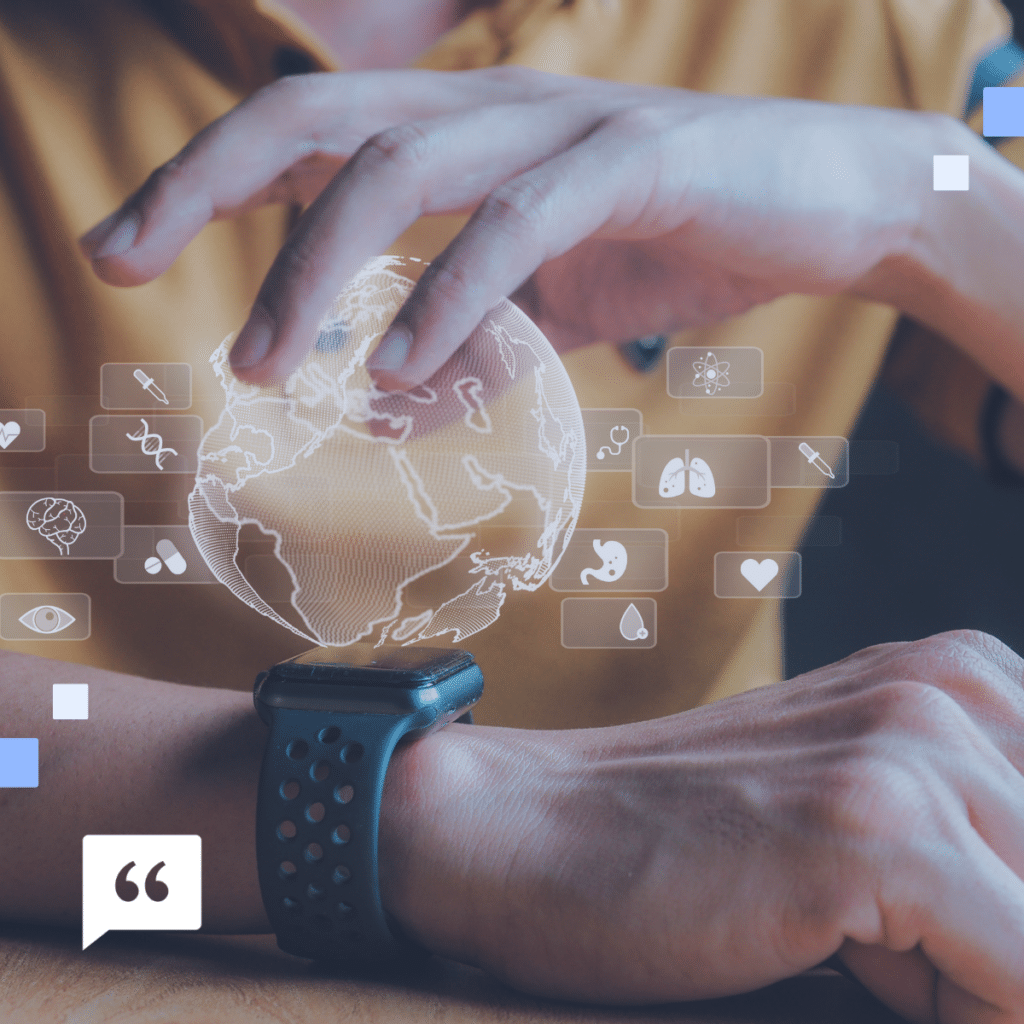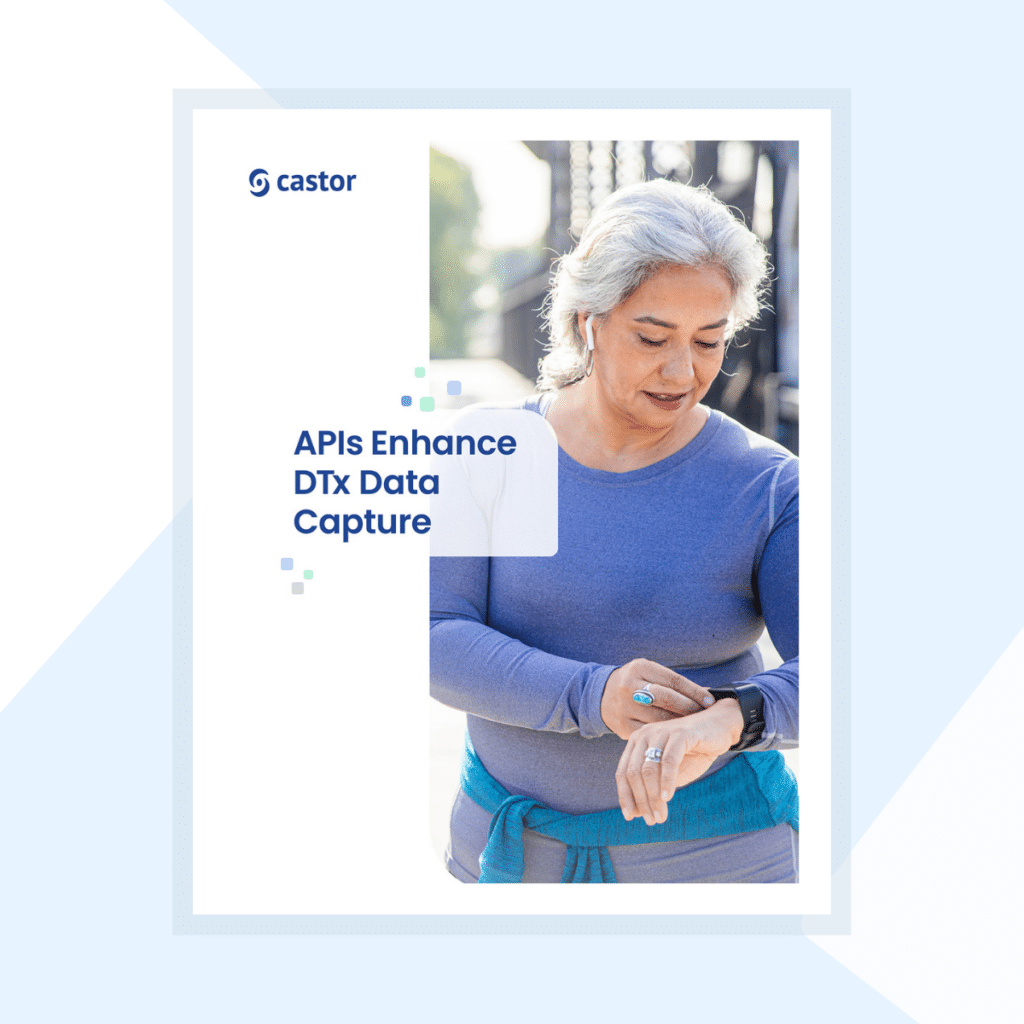How real-world data capture closes the gap
No matter how conclusive clinical evidence is for medical treatments, developers may struggle to see precisely how their treatment performs in the real world—outside the controlled environment of the clinic or office. Do patients take the medication as expected while immersed in busy schedules? How often do they practice the exercises the therapist prescribes?
Unfortunately, medical treatments proven to work in clinical trials do not always measure up in the real world. According to Simon Makin’s “A smarter way to treat” article, one quarter to one half of the global population doesn’t take medications as recommended. In the U.S., this failure links to up to 125,000 deaths and costs up to $289 billion.1 The gap between efficacy and effectiveness is a significant issue impacting many.
Digital therapeutics provide real-world data capture
Enter digital therapeutics (DTx) and their unique ability to capture real-world data remotely. DTx are software-based, evidence-driven treatments for managing, preventing, and treating a wide range of medical conditions or illnesses.2 Unlike conventional medical interventions such as medications or medical devices, DTx can constantly gather data on patients’ involvement and progress—giving a crystal-clear view of how the treatment is working outside of a clinical setting.
DTx capture data via software on patients’ devices or connected wearables. App data includes any biometrics recorded in the app, patient-reported outcomes, patient progress through software modules, and other data stored in the app, such as clinic visits and test results. While more traditional data collection methods are periodic, real-world data collection can be continuous and ongoing.3 When used effectively, the detail captured improves the data quality and helps demonstrate how users interact with the treatment in their everyday lives.4
These examples illustrate DTx real-world data capture:
- DTx Propeller® helps patients with asthma or chronic obstructive pulmonary disease (COPD) manage their condition using a sensor on their inhaler to track how/when they use it. In addition to data from the sensor, healthcare professionals can also track patient progress through shareable progress reports.5
- Catalia Health’s Mabu® software uses artificial intelligence to personalize reminders for patients to take medications. Mabu operates through multiple interfaces—including a countertop robot. Healthcare professionals remotely monitor patient progress to identify root causes of events such as emergency visits or gaps in treatment.6,7
- Abilify’s MyCite® ingestible sensor records daily information on when patients take medications. The sensor is part of a system including a patch, an app, a dashboard, and conversation guidance. Patients’ healthcare teams monitor how patients are taking medications and their effects.8
Tech helps manage real-world data capture
Tech tools help DTx maximize the impact of the real-world data they capture. Technology can assist in every aspect of handling patient data—from collecting responses from digital patient surveys to capturing, processing, and integrating data from varied sources to securely tracking patients’ consent. Software developed specifically for DTx streamlines data capture and management, making it easier for DTx to get products to market and into patients’ hands. DTx real-world data capture can bridge the gap between how well researchers think their treatment functions (efficacy) and how well their treatment performs (effectiveness) outside of a clinical setting. Regular, remote data capture can transform how effective treatments can be and the type of people they can reach.
1Makin S. A smarter way to treat. Nature. 2019;573. https://media.nature.com/original/magazine-assets/d41586-019-02873-1/d41586-019-02873-1.pdf. Accessed August 27, 2021.
2Understanding DTx. Digital Therapeutics Alliance. https://dtxalliance.org/understanding-dtx. Accessed August 26, 2021.
3Sverdlov O, van Dam J, Hannesdottir K, and Thornton-Wells T. Digital therapeutics: An integral component of digital innovation in drug development. Clin Pharmacol Ther. 2018;104(1):72-80. doi:10.1002/cpt.1036
4Van Norman G. Decentralized clinical trials: The future of medical product development? JACC Basic Transl Sci. 2021;6(4):384–387. doi: 10.1016/j.jacbts.2021.01.011
5DTx product case study: Propeller. Digital Therapeutics Alliance. https://dtxalliance.org/products/propeller/. Accessed August 26, 2021.
6The Mabu care insights platform. Catalia Health. http://www.cataliahealth.com/platform-ai/. Accessed September 8, 2021.
7Patient-centered solutions. Catalia Health. http://www.cataliahealth.com/solutions/. Accessed September 8, 2021.
8How MyCite works. Abilify MyCite. https://www.abilifymycite.com/how-mycite-works. Accessed September 8, 2021.



